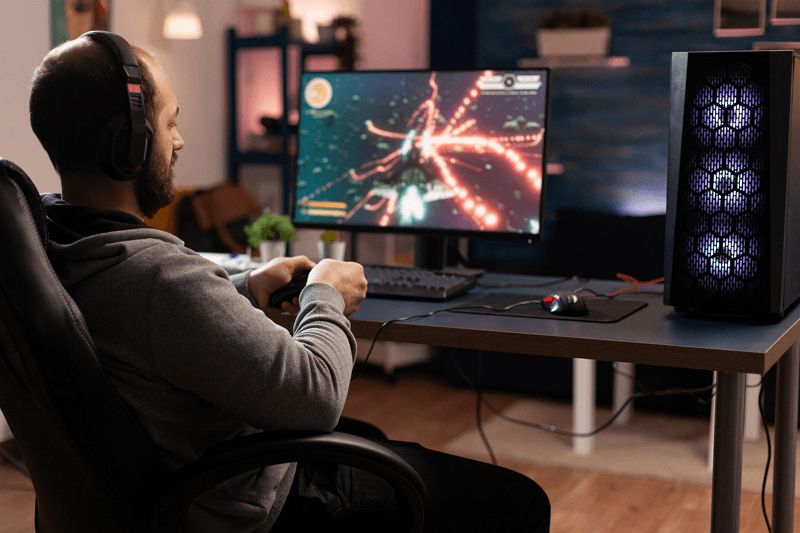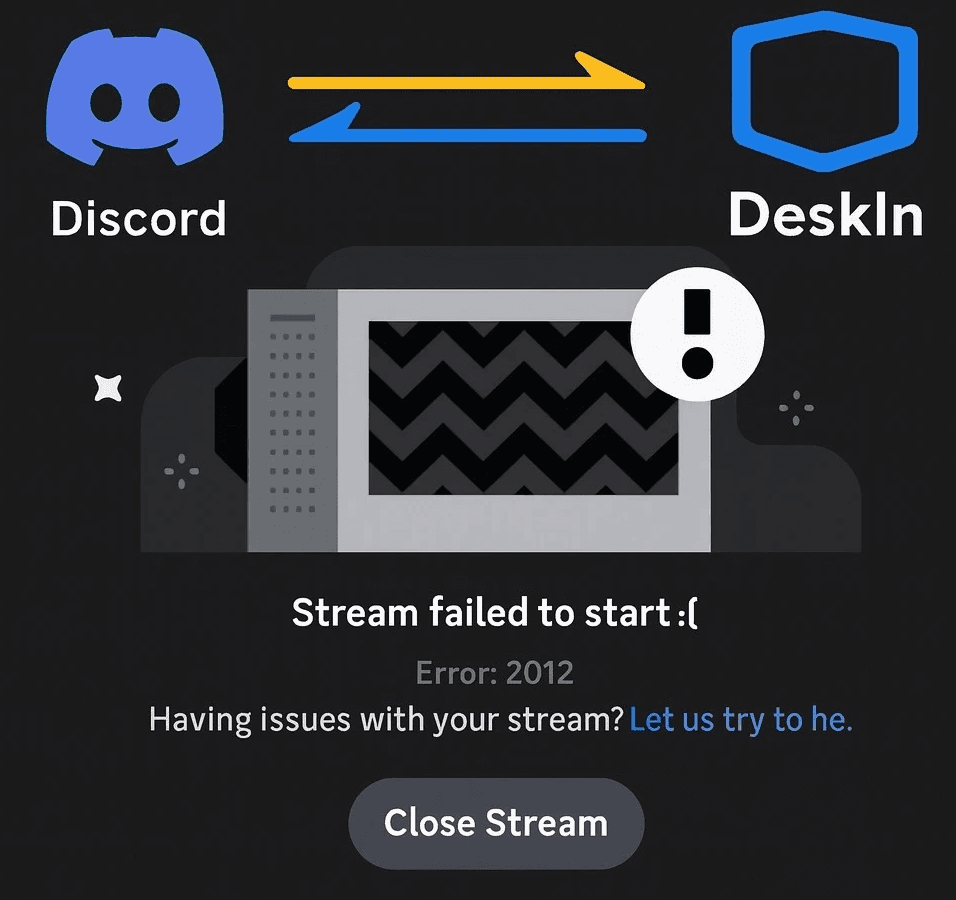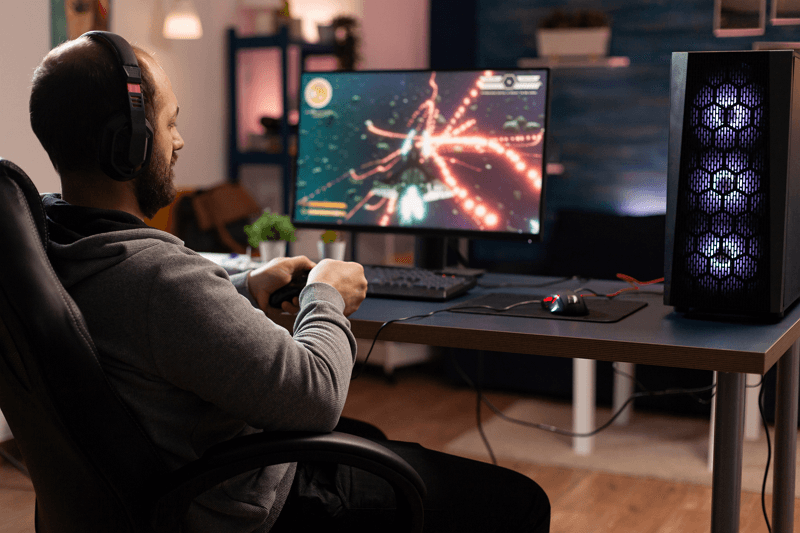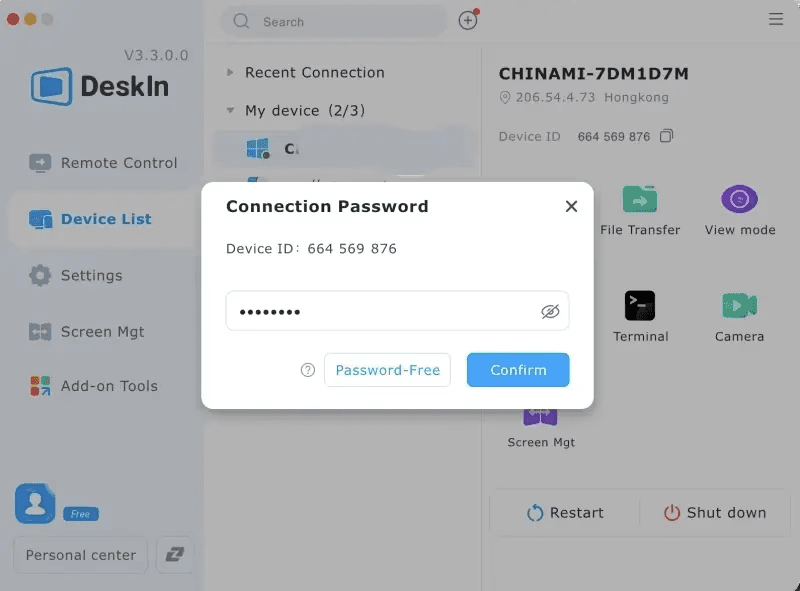Remote Desktop Protocol (RDP) is a widely used tool for remote access to computers, but it has also become a prime target for cyberattacks. With the rise of remote work and cross-regional collaboration, securing RDP connections is more critical than ever. Unprotected RDP connections can serve as gateways for ransomware, data breaches, and unauthorized access.
Whether you're a regular user or an IT administrator, understanding how to secure RDP connections is essential in today's digital landscape. In this article, we'll explore how to strengthen RDP security, covering everything from basic configuration tips to more advanced protective measures. If you prefer an alternative to traditional RDP, we'll also introduce you to DeskIn, which offers secure, user-friendly remote access.
What is RDP Security and Why Does It Matter
RDP (Remote Desktop Protocol) is a Microsoft protocol that allows users to remotely access another computer over a network connection. It's widely used by IT administrators and remote workers to manage servers, workstations, and other systems. However, while RDP offers convenience, is RDP secure? The answer is: it comes with significant security risks if not properly configured.
RDP security refers to the measures taken to protect remote desktop connections from unauthorized access, data breaches, and other cyber threats. It is crucial to ensure RDP security, especially in the context of remote work, where the threat surface is significantly expanded. If not secured, RDP connections can become an entry point for attackers, exposing sensitive data and systems to malicious exploits.
Key Risks of Insecure RDP Connections
While RDP is a valuable tool for remote access, it poses significant risks if not properly secured. A poorly protected RDP connection can open the door to various cyber threats, including data breaches, unauthorized access, and even ransomware attacks. So, how secure is remote desktop without proper safeguards? The reality is, it's not secure at all, making it essential to implement best practices to protect RDP and mitigate these risks.
Here are some key risks associated with insecure RDP connections:
Weak Passwords: RDP sessions are often targeted by brute-force attacks, where attackers attempt to guess weak or common passwords. Without strong, complex passwords, attackers can gain easy access to systems.
Public Network Vulnerabilities: Using RDP over unsecured or public networks (such as free Wi-Fi at coffee shops) makes it easy for hackers to intercept your connection and steal sensitive information.
Lack of Encryption: If RDP traffic isn't encrypted, data exchanged between the remote computer and the host can be intercepted by attackers, leading to potential data breaches.
Exposure of Default Ports: RDP typically uses port 3389, which is often left open to the public internet. This makes it easy for cybercriminals to locate and target RDP services exposed on the internet.
Inadequate Authentication: RDP security can be compromised if multi-factor authentication (MFA) is not enabled, allowing attackers to gain access with just a password.
Outdated Software: RDP software and the underlying operating system may contain vulnerabilities that can be exploited by attackers. Failing to apply patches and updates leaves systems exposed.
By recognizing these risks and implementing proper security measures, you can significantly reduce the chances of falling victim to an RDP-related attack. It's important to remember that how secure remote desktop is depends entirely on how you configure and maintain your connection. If these vulnerabilities aren't addressed, you could be opening the door to devastating cyberattacks.
How to Secure RDP Connections: Best Practices
Securing RDP (Remote Desktop Protocol) connections is critical to protecting your systems from unauthorized access and cyberattacks. By following a series of best practices, you can significantly enhance the security of your RDP setup, whether you're connecting remotely from home or an office environment. Here's how to secure RDP effectively.
👀 More to Discover:
Enable Network Level Authentication (NLA)
What it does: NLA requires users to authenticate before establishing an RDP session, ensuring that only authorized users can access the system.
Why it matters: This adds an extra layer of protection, preventing attackers from accessing the system even if they can guess or crack the password.

Use Strong Passwords and Multi-Factor Authentication (MFA)
What it does: A strong password combines uppercase and lowercase letters, numbers, and symbols. MFA adds a layer of security by requiring a second form of identification (like a code sent to your phone).
Why it matters: Passwords alone are often easy to compromise. MFA significantly reduces the chances of unauthorized access, making it a vital security measure for any remote work security best practices.
Restrict Access to Specific IP Addresses
What it does: By limiting access to only known IP addresses, you can prevent unauthorized devices from attempting to connect to your RDP session.
Why it matters: This ensures that only trusted locations can establish an RDP connection, reducing the risk of brute-force attacks and other vulnerabilities.
Use a VPN for Added Security
What it does: A Virtual Private Network (VPN) encrypts your internet traffic, including RDP connections, and hides your IP address, making it much harder for attackers to intercept your communication.
Why it matters: When accessing RDP from home or over public networks, using a VPN ensures your connection remains secure and private, protecting sensitive data from potential eavesdropping.
Regularly Update RDP Software and Your OS
What it does: Keeping RDP and your operating system up-to-date ensures that known vulnerabilities are patched and that you're protected from the latest security threats.
Why it matters: Cybercriminals often exploit outdated software. Regular updates prevent such exploits, keeping your remote desktop secure.
By following these steps, you can take control of your RDP security and protect your systems from unauthorized access, data breaches, and cyberattacks. Whether you're looking to secure RDP from home or in a corporate environment, these measures are crucial.
More Pro Measures to Advance RDP Security
If you want to take RDP security to the next level, there are several additional measures you can implement. These are designed to offer an even more robust defense against cyber threats:
Use a Firewall to Control RDP Access: Allow RDP traffic only from trusted IPs, blocking unauthorized connections.
Change the Default RDP Port (3389): Change the default port to make it harder for attackers to target your RDP service.
Implement Account Lockout Policies: Automatically lock accounts after several failed login attempts to prevent brute-force attacks.
Monitor RDP Access Logs: Regularly check access logs for suspicious activity, such as failed logins or unauthorized connections.
Ensure Strong Encryption Protocols: Ensure RDP uses strong encryption (e.g., TLS) to protect data transmitted during remote sessions.
📌 Tips: How to Check RDP Encryption Level?
To ensure your RDP connection is secure, check the session's encryption settings. Verify that it uses strong encryption protocols like TLS, which is the most widely recommended for secure connections.
Bonus Tip: Use DeskIn for Even Safer Remote Access
While traditional RDP security measures are essential, you can take your remote access security to the next level with DeskIn. It is a modern, secure, and user-friendly alternative that eliminates many of the risks associated with traditional RDP configurations. By providing an enhanced layer of security and streamlining setup, DeskIn ensures that your remote desktop access is both protected and easy to manage.

📌 Key Features of DeskIn:
No Public IP Required for Access: Eliminates the risks associated with exposing your RDP service to the public internet.
End-to-End Encryption and Secure User Access Controls: Ensures that all connections are encrypted, safeguarding your data.
Multi-Platform Support + File Transfer and Collaboration: Connect from any device and easily share files or collaborate in real-time.
Easy Setup with Temporary Access Codes or Pre-Set Passwords: Set up and start using DeskIn with minimal configuration.
Ideal for Small to Medium Enterprises and Remote Workers: Provides a secure, cost-effective solution for businesses and individuals working remotely.
Here are the brief steps to use DeskIn to remote control other PCs, ensuring RDP security:
Sign up for a free DeskIn account on the official website.
Create secure access permissions by selecting either temporary access codes or pre-set passwords.
Ensure that encryption is activated for all remote sessions to protect your data.
Download the DeskIn app or use the web platform to connect to your remote desktop securely.
Use integrated file transfer and collaboration features to enhance productivity.

Conclusion: Why RDP Security Can't Be Ignored
Securing your RDP connections is essential for protecting sensitive data and ensuring safe remote work. Without the right security measures, unprotected RDP connections can expose your network to threats like unauthorized access, ransomware, and data breaches. By implementing best practices such as strong passwords, Network Level Authentication (NLA), and Multi-Factor Authentication (MFA), you can significantly reduce these risks and ensure that your remote desktop access remains secure.
However, for those looking for an even more secure and user-friendly solution, DeskIn offers a powerful alternative to traditional RDP. DeskIn simplifies the remote desktop experience while providing enhanced security features, such as end-to-end encryption, no need for public IP exposure, and robust access controls. Whether you're a small business or a remote worker, DeskIn ensures that your remote access is not only secure but also efficient and easy to manage.
Remote Desktop Protocol (RDP) is a widely used tool for remote access to computers, but it has also become a prime target for cyberattacks. With the rise of remote work and cross-regional collaboration, securing RDP connections is more critical than ever. Unprotected RDP connections can serve as gateways for ransomware, data breaches, and unauthorized access.
Whether you're a regular user or an IT administrator, understanding how to secure RDP connections is essential in today's digital landscape. In this article, we'll explore how to strengthen RDP security, covering everything from basic configuration tips to more advanced protective measures. If you prefer an alternative to traditional RDP, we'll also introduce you to DeskIn, which offers secure, user-friendly remote access.
What is RDP Security and Why Does It Matter
RDP (Remote Desktop Protocol) is a Microsoft protocol that allows users to remotely access another computer over a network connection. It's widely used by IT administrators and remote workers to manage servers, workstations, and other systems. However, while RDP offers convenience, is RDP secure? The answer is: it comes with significant security risks if not properly configured.
RDP security refers to the measures taken to protect remote desktop connections from unauthorized access, data breaches, and other cyber threats. It is crucial to ensure RDP security, especially in the context of remote work, where the threat surface is significantly expanded. If not secured, RDP connections can become an entry point for attackers, exposing sensitive data and systems to malicious exploits.
Key Risks of Insecure RDP Connections
While RDP is a valuable tool for remote access, it poses significant risks if not properly secured. A poorly protected RDP connection can open the door to various cyber threats, including data breaches, unauthorized access, and even ransomware attacks. So, how secure is remote desktop without proper safeguards? The reality is, it's not secure at all, making it essential to implement best practices to protect RDP and mitigate these risks.
Here are some key risks associated with insecure RDP connections:
Weak Passwords: RDP sessions are often targeted by brute-force attacks, where attackers attempt to guess weak or common passwords. Without strong, complex passwords, attackers can gain easy access to systems.
Public Network Vulnerabilities: Using RDP over unsecured or public networks (such as free Wi-Fi at coffee shops) makes it easy for hackers to intercept your connection and steal sensitive information.
Lack of Encryption: If RDP traffic isn't encrypted, data exchanged between the remote computer and the host can be intercepted by attackers, leading to potential data breaches.
Exposure of Default Ports: RDP typically uses port 3389, which is often left open to the public internet. This makes it easy for cybercriminals to locate and target RDP services exposed on the internet.
Inadequate Authentication: RDP security can be compromised if multi-factor authentication (MFA) is not enabled, allowing attackers to gain access with just a password.
Outdated Software: RDP software and the underlying operating system may contain vulnerabilities that can be exploited by attackers. Failing to apply patches and updates leaves systems exposed.
By recognizing these risks and implementing proper security measures, you can significantly reduce the chances of falling victim to an RDP-related attack. It's important to remember that how secure remote desktop is depends entirely on how you configure and maintain your connection. If these vulnerabilities aren't addressed, you could be opening the door to devastating cyberattacks.
How to Secure RDP Connections: Best Practices
Securing RDP (Remote Desktop Protocol) connections is critical to protecting your systems from unauthorized access and cyberattacks. By following a series of best practices, you can significantly enhance the security of your RDP setup, whether you're connecting remotely from home or an office environment. Here's how to secure RDP effectively.
👀 More to Discover:
Enable Network Level Authentication (NLA)
What it does: NLA requires users to authenticate before establishing an RDP session, ensuring that only authorized users can access the system.
Why it matters: This adds an extra layer of protection, preventing attackers from accessing the system even if they can guess or crack the password.

Use Strong Passwords and Multi-Factor Authentication (MFA)
What it does: A strong password combines uppercase and lowercase letters, numbers, and symbols. MFA adds a layer of security by requiring a second form of identification (like a code sent to your phone).
Why it matters: Passwords alone are often easy to compromise. MFA significantly reduces the chances of unauthorized access, making it a vital security measure for any remote work security best practices.
Restrict Access to Specific IP Addresses
What it does: By limiting access to only known IP addresses, you can prevent unauthorized devices from attempting to connect to your RDP session.
Why it matters: This ensures that only trusted locations can establish an RDP connection, reducing the risk of brute-force attacks and other vulnerabilities.
Use a VPN for Added Security
What it does: A Virtual Private Network (VPN) encrypts your internet traffic, including RDP connections, and hides your IP address, making it much harder for attackers to intercept your communication.
Why it matters: When accessing RDP from home or over public networks, using a VPN ensures your connection remains secure and private, protecting sensitive data from potential eavesdropping.
Regularly Update RDP Software and Your OS
What it does: Keeping RDP and your operating system up-to-date ensures that known vulnerabilities are patched and that you're protected from the latest security threats.
Why it matters: Cybercriminals often exploit outdated software. Regular updates prevent such exploits, keeping your remote desktop secure.
By following these steps, you can take control of your RDP security and protect your systems from unauthorized access, data breaches, and cyberattacks. Whether you're looking to secure RDP from home or in a corporate environment, these measures are crucial.
More Pro Measures to Advance RDP Security
If you want to take RDP security to the next level, there are several additional measures you can implement. These are designed to offer an even more robust defense against cyber threats:
Use a Firewall to Control RDP Access: Allow RDP traffic only from trusted IPs, blocking unauthorized connections.
Change the Default RDP Port (3389): Change the default port to make it harder for attackers to target your RDP service.
Implement Account Lockout Policies: Automatically lock accounts after several failed login attempts to prevent brute-force attacks.
Monitor RDP Access Logs: Regularly check access logs for suspicious activity, such as failed logins or unauthorized connections.
Ensure Strong Encryption Protocols: Ensure RDP uses strong encryption (e.g., TLS) to protect data transmitted during remote sessions.
📌 Tips: How to Check RDP Encryption Level?
To ensure your RDP connection is secure, check the session's encryption settings. Verify that it uses strong encryption protocols like TLS, which is the most widely recommended for secure connections.
Bonus Tip: Use DeskIn for Even Safer Remote Access
While traditional RDP security measures are essential, you can take your remote access security to the next level with DeskIn. It is a modern, secure, and user-friendly alternative that eliminates many of the risks associated with traditional RDP configurations. By providing an enhanced layer of security and streamlining setup, DeskIn ensures that your remote desktop access is both protected and easy to manage.

📌 Key Features of DeskIn:
No Public IP Required for Access: Eliminates the risks associated with exposing your RDP service to the public internet.
End-to-End Encryption and Secure User Access Controls: Ensures that all connections are encrypted, safeguarding your data.
Multi-Platform Support + File Transfer and Collaboration: Connect from any device and easily share files or collaborate in real-time.
Easy Setup with Temporary Access Codes or Pre-Set Passwords: Set up and start using DeskIn with minimal configuration.
Ideal for Small to Medium Enterprises and Remote Workers: Provides a secure, cost-effective solution for businesses and individuals working remotely.
Here are the brief steps to use DeskIn to remote control other PCs, ensuring RDP security:
Sign up for a free DeskIn account on the official website.
Create secure access permissions by selecting either temporary access codes or pre-set passwords.
Ensure that encryption is activated for all remote sessions to protect your data.
Download the DeskIn app or use the web platform to connect to your remote desktop securely.
Use integrated file transfer and collaboration features to enhance productivity.

Conclusion: Why RDP Security Can't Be Ignored
Securing your RDP connections is essential for protecting sensitive data and ensuring safe remote work. Without the right security measures, unprotected RDP connections can expose your network to threats like unauthorized access, ransomware, and data breaches. By implementing best practices such as strong passwords, Network Level Authentication (NLA), and Multi-Factor Authentication (MFA), you can significantly reduce these risks and ensure that your remote desktop access remains secure.
However, for those looking for an even more secure and user-friendly solution, DeskIn offers a powerful alternative to traditional RDP. DeskIn simplifies the remote desktop experience while providing enhanced security features, such as end-to-end encryption, no need for public IP exposure, and robust access controls. Whether you're a small business or a remote worker, DeskIn ensures that your remote access is not only secure but also efficient and easy to manage.

Play x Work
All at Once
DeskIn Remote Game
only $14.32 USD 🎉 Limited on July 16-31
Add promo code: deskinsummer1

























